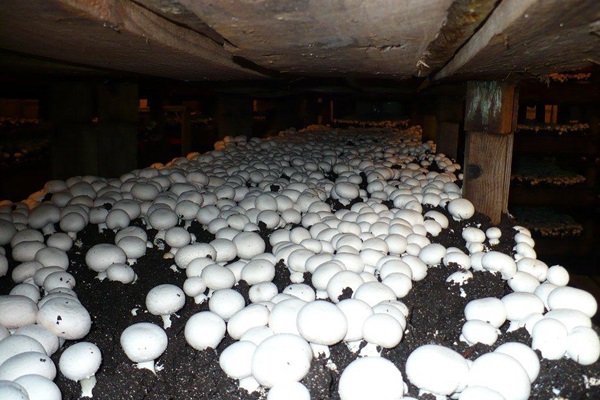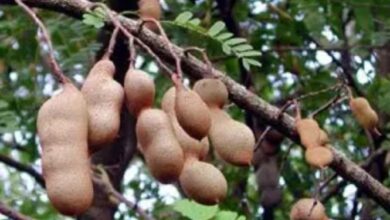How to grow mushrooms at home
When it comes to managing pests and diseases in mushroom cultivation, here are some key points:

Feature: Growing mushrooms at home can be a fascinating and rewarding experience! Whether you’re interested in culinary mushrooms or medicinal varieties, here are some steps to get you started:
- Choose Your Mushroom Type:
Decide which type of mushroom you want to grow. Some popular options for beginners include oyster mushrooms, shiitake, or white button mushrooms.
- Select a Growing Method:
There are several methods to choose from:
- Mushroom Growing Kits:These kits come with everything you need, including substrate and mushroom spawn. Simply follow the instructions.
- Woodchip Garden Bed:Mix mushroom spawn with woodchips and create a garden bed.
- Log Cultivation:Inoculate logs with mushroom spawn and let them grow outdoors.
- Pasteurized Substrate:Use materials like straw or sawdust pellets.
- Sterilized Enriched Sawdust Substrate:Requires more advanced techniques.
- Prepare Your Substrate:
- Depending on your chosen method, prepare the substrate (growing medium). It could be straw, woodchips, or other materials.
- Inoculate with Mushroom Spawn:
- Add mushroom spawn (mycelium) to the substrate. This is like planting seeds for mushrooms.
- Incubate:
- Keep the substrate in a warm, dark place to allow the mycelium to spread.
- Lower the Temperature:
- After incubation, lower the temperature to around 55-60°F (13-16°C) to encourage fruiting.
- Harvest and Enjoy:
- Once mushrooms start growing, harvest them when they’re ready.
Remember, each mushroom species has specific requirements, so follow detailed instructions based on the type you choose.
Common mistakes to avoid when growing mushrooms
Here are some common mistakes to avoid when growing mushrooms:
- Contaminated Substrate:
- Ensure your substrate (growing medium) is clean and free from contaminants. Contamination can hinder mushroom growth.
- Use proper sterilization techniques if you’re making your own substrate.
- Inadequate Sterilization:
- If you’re using homemade substrate, insufficient sterilization can lead to contamination.
- Follow recommended sterilization times and temperatures.
- Improper Humidity and Ventilation:
- Mushrooms need high humidity during incubation and fruiting. Use a hygrometer to monitor humidity levels.
- Proper ventilation prevents excess moisture buildup and mold growth.
- Incorrect Temperature:
- Maintain the right temperature for each mushroom species. Too hot or too cold can affect growth.
- Sudden temperature fluctuations can stress the mycelium.
- Overhandling and Disturbing Mycelium:
- Be gentle when handling substrate or inoculated logs. Excessive disturbance can slow down growth.
- Avoid touching mycelium directly.
- Inadequate Light Exposure:
- Some mushrooms need indirect light during fruiting. Others prefer darkness.
- Research the light requirements for your chosen species.
- Harvesting Too Late or Too Early:
- Harvest mushrooms when they’re mature but before they release spores.
- Waiting too long can result in poor quality or spore-filled mushrooms.
Remember, attention to detail and patience are key to successful mushroom cultivation.
Mushroom pests and diseases
When it comes to managing pests and diseases in mushroom cultivation, here are some key points:
- Green Mold (Trichoderma):
- Characterized by dense white mycelial growth followed by extensive green sporulation.
- Proper sanitation and hygiene are crucial to prevent contamination.
- Use clean substrate and maintain optimal humidity levels.
- Bacterial Blotch:
- Endemic in mushroom growing houses, affecting mushroom quality and yield.
- Caused by bacteria like Pseudomonas tolaasii.
- Maintain cleanliness and avoid overwatering.
- Sciarid Flies (Sciaridae):
- Common pests in mushroom production.
- Larvae feed on mycelium and can cause damage.
- Use sticky traps and proper sanitation to control them.
- Phorid Flies (Megaselia halterata):
- Less damaging than sciarid flies but still a concern.
- Implement good hygiene practices to reduce their impact.
- Nematodes:
- Parasitic and saprophytic nematodes can affect mushroom growth.
- Regular soil testing helps monitor nematode populations.
- Verticillium Dry Bubble:
- A fungal disease affecting Agaricus bisporus.
- Proper substrate pasteurization and hygiene are essential.
Remember, prevention and early detection are key to successful mushroom farming.
How to prevent pests and diseases in mushroom farm
To prevent pests and diseases in your mushroom farm, follow these guidelines:
- Hygiene and Sanitation:
- Keep your growing area clean and free from debris.
- Regularly disinfect tools, containers, and surfaces.
- Quality Spawn and Substrate:
- Start with high-quality mushroom spawn and substrate.
- Purchase from reputable suppliers.
- Proper Ventilation:
- Good airflow prevents excess humidity and discourages mold growth.
- Use fans or vents to maintain fresh air circulation.
- Monitor Temperature and Humidity:
- Maintain optimal conditions for your mushroom species.
- Avoid extreme temperature fluctuations.
- Inspect Regularly:
- Check for signs of pests or diseases.
- Early detection allows timely intervention.
- Isolate Contaminated Material:
- Remove contaminated substrate or infected mushrooms promptly.
- Isolate affected areas to prevent spread.
- Integrated Pest Management (IPM):
- Use natural predators (e.g., nematodes) to control pests.
- Avoid chemical pesticides if possible.
Remember, prevention is key
Do you have an advertisement or an article you want to publish? Mail us at theugreports@gmail.com or WhatsApp +256394700683.






